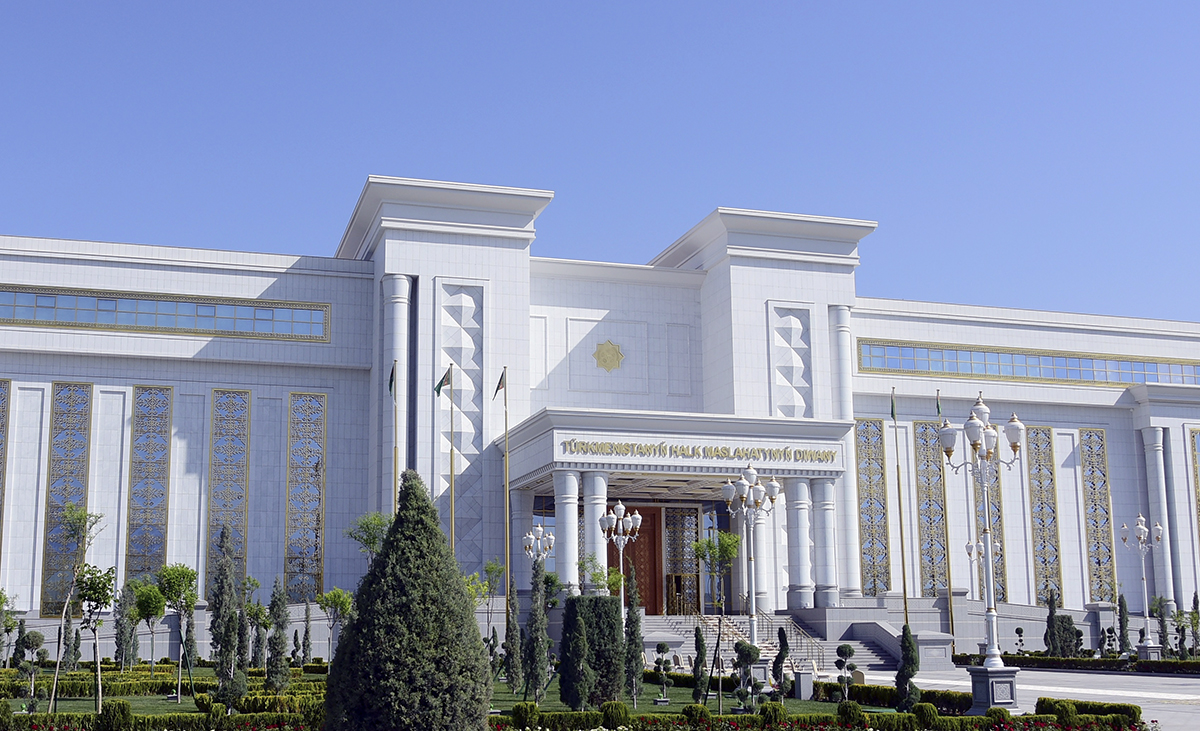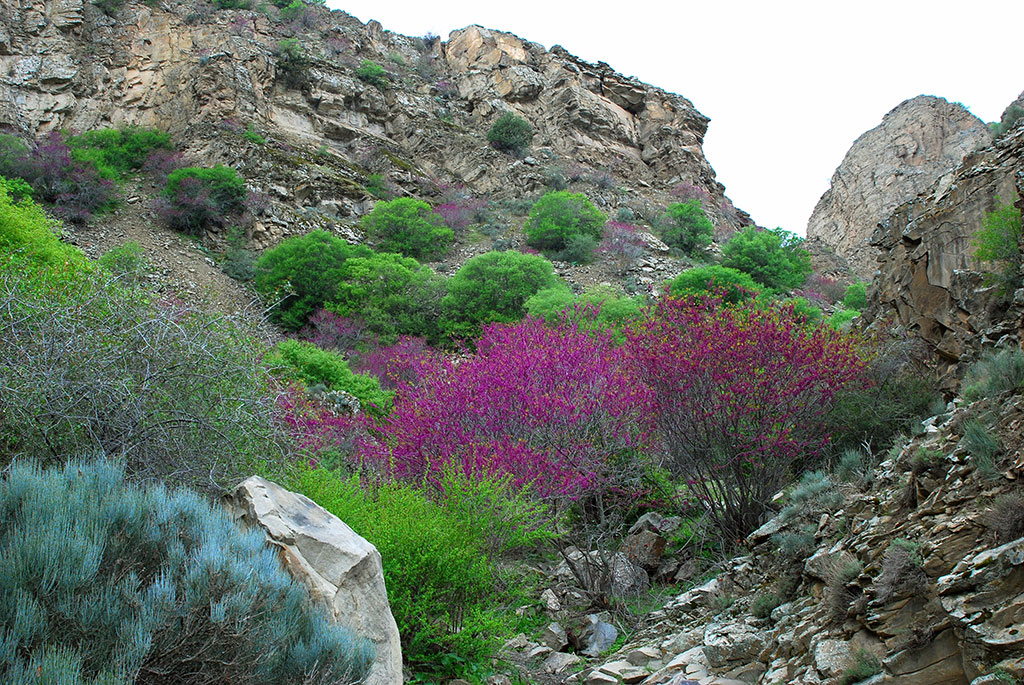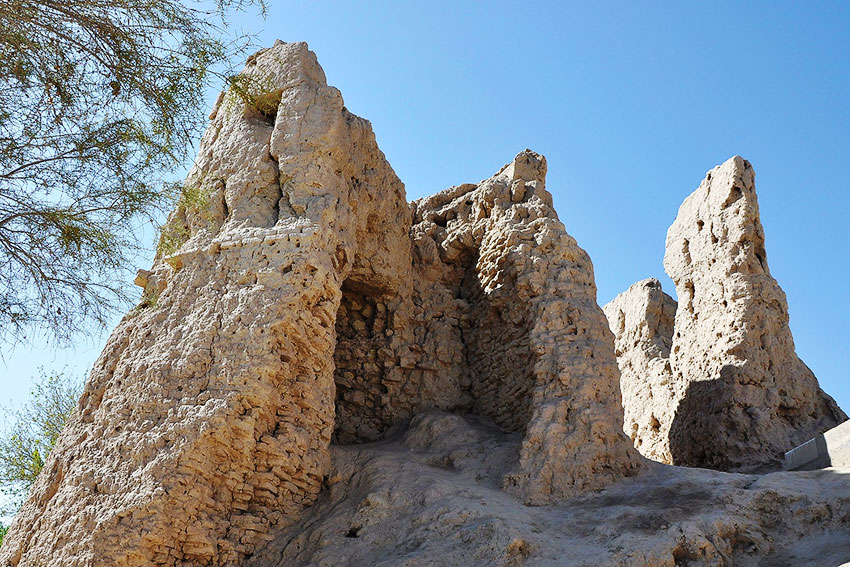One of the famous archeological duets of the hoary antiquity, well-known among scientists of entire world, is Old and New Nisa. This complex entered into UNESCO’s World Heritage List, is located several kilometers far from the Turkmen capital. From the beginning of the last century, these ancient large cities were studied by the archeologists from various countries. In this regard, Old Nisa was more “lucky” than New Nisa. Digging out thick layers of earth, the scientists discovered new halls and found new artifacts of antique civilization.



National Management of Turkmenistan for protection, study and restoration of the monuments of history and culture prepared for printing a large guide-book over Old Nisa. The author of the guide-book is famous archeologist, Doctor of History Viktor Nikolayevich Pilipko from the Institute of Archeology of the Russian Academy of Sciences. At the head of special crew, he realizes the excavations of this monument more than thirty years. Within this period, it was carried out a large scope of work, opened several important elements of the Parthian architectural complex existed nearly two thousand years ago as well as numerous findings of works of ancient art, which adorned the collection of the state museums of Turkmenistan. V.N. Pilipko published two fundamental monographs about Old Nisa and a series of scientific articles in different languages in various countries devoted to this unique monument.

- During field explorations in Nisa, people come to me and ask to tell them something interesting about this site of ancient settlement. Everyone always wants to know about new findings from own lips, - Viktor Nikolayevich says, telling about idea of writing of new Old Nisa guide-book. – Sometimes, I meet them halfway, but often refuse, because excavations are very intensive and responsible work, demanding full suspension from other activities. Nevertheless, I feel some fault before those, who came to meet with the history of their land and got no satisfaction with this information. The final goal of the archeologist’s work supposes the providing my contemporaries with reliable information as much as possible about this or other historical monument, ancient civilizations. Under influence of these slight guilty consciences in between field seasons – summer and winter, I wrote this guide-book. I hope that it will be effective for the visitor of site of ancient settlement to orientate independently in ancient ruins and get some notion about their former look and destination.

Another reason is the desire to bring the notions about this historical monument into accord with newest discoveries. The scientist always strives for objectivity, but nevertheless, owing to the force of various reasons, in scientific environment, there are various explanations of the same historical facts and phenomena. Birth, collision and ruin of hypotheses reflect fascinating and endless path of cognition. The history of study of Nisa receives in full this process. There is an impartial necessity in episodical revision of earlier formed opinions. New facts give rise to new ideas and confirm one of the earlier expressed surmises. In spite of caution, insight and experience of the researchers, the subsequent discoveries inevitably make amendments in previous notions about this or other historical monument, particularly about Nisa. Therefore, doing justice to selflessness and talent of their predecessors in study of Nisa (A.A. Marushenko, M.E. Masson, G.A. Pugachenkova, M.S. Mershiyev, N.I. Krasheninnikova) and striving to use in full all attainments, being based on new facts, I also tried to imagine slightly in other way the past of this wonderful monument. Another task of this guide-book is to provide the notion about look of Nisa buildings in the period of flourishing and look of the monument after excavations.

Most of tourists also interest in origin of the name “Nisa”. Initial significance of this word is not known exactly. Medieval geographer Samani in his dictionary gives obviously farfetched explanation of interpretation of word “Nisa”. To his opinion, the name of the city was originated from the Arabic word, which is translated as “women”. According to the legend, during conquest of the Central Asia, the Arabs prepared to take the city by storm, but they gave up their intention, having learnt that it is protected by women only. Modern philologists suggest several interpretations of this name. One of them is the explanation of toponym “Nisa” as “low, comfortable place for settling”. Of course, there were many such places. It shows the abundance of “Nisas” on ancient and medieval toponymy. However, now, it is widely recognized another interpretation – “bright, shining”. Adjective “Old” has emerged quite recently and is used for distinction of two ancient sites of ancient settlements located in the contemporary settlement Bagir. Life in ancient settlement under review has stopped long ago as opposed to New Nisa, which functioned as full-fledged city at the beginning of XIX century.
To date, the expedition at the head of V. Pilipko explored nearly the fifth part of the territory of Old Nisa. The Turkmen-Italian expedition under leadership of Dr. Carlo Lippolis simultaneously works here. Undoubtedly, the continuation of excavations will enrich us not only with new findings, but also with new knowledge on history of this wonderful monument. With the lapse of time, Nisa will adjudicate what theories are close to the truth.



National Management of Turkmenistan for protection, study and restoration of the monuments of history and culture prepared for printing a large guide-book over Old Nisa. The author of the guide-book is famous archeologist, Doctor of History Viktor Nikolayevich Pilipko from the Institute of Archeology of the Russian Academy of Sciences. At the head of special crew, he realizes the excavations of this monument more than thirty years. Within this period, it was carried out a large scope of work, opened several important elements of the Parthian architectural complex existed nearly two thousand years ago as well as numerous findings of works of ancient art, which adorned the collection of the state museums of Turkmenistan. V.N. Pilipko published two fundamental monographs about Old Nisa and a series of scientific articles in different languages in various countries devoted to this unique monument.

- During field explorations in Nisa, people come to me and ask to tell them something interesting about this site of ancient settlement. Everyone always wants to know about new findings from own lips, - Viktor Nikolayevich says, telling about idea of writing of new Old Nisa guide-book. – Sometimes, I meet them halfway, but often refuse, because excavations are very intensive and responsible work, demanding full suspension from other activities. Nevertheless, I feel some fault before those, who came to meet with the history of their land and got no satisfaction with this information. The final goal of the archeologist’s work supposes the providing my contemporaries with reliable information as much as possible about this or other historical monument, ancient civilizations. Under influence of these slight guilty consciences in between field seasons – summer and winter, I wrote this guide-book. I hope that it will be effective for the visitor of site of ancient settlement to orientate independently in ancient ruins and get some notion about their former look and destination.

Another reason is the desire to bring the notions about this historical monument into accord with newest discoveries. The scientist always strives for objectivity, but nevertheless, owing to the force of various reasons, in scientific environment, there are various explanations of the same historical facts and phenomena. Birth, collision and ruin of hypotheses reflect fascinating and endless path of cognition. The history of study of Nisa receives in full this process. There is an impartial necessity in episodical revision of earlier formed opinions. New facts give rise to new ideas and confirm one of the earlier expressed surmises. In spite of caution, insight and experience of the researchers, the subsequent discoveries inevitably make amendments in previous notions about this or other historical monument, particularly about Nisa. Therefore, doing justice to selflessness and talent of their predecessors in study of Nisa (A.A. Marushenko, M.E. Masson, G.A. Pugachenkova, M.S. Mershiyev, N.I. Krasheninnikova) and striving to use in full all attainments, being based on new facts, I also tried to imagine slightly in other way the past of this wonderful monument. Another task of this guide-book is to provide the notion about look of Nisa buildings in the period of flourishing and look of the monument after excavations.

Most of tourists also interest in origin of the name “Nisa”. Initial significance of this word is not known exactly. Medieval geographer Samani in his dictionary gives obviously farfetched explanation of interpretation of word “Nisa”. To his opinion, the name of the city was originated from the Arabic word, which is translated as “women”. According to the legend, during conquest of the Central Asia, the Arabs prepared to take the city by storm, but they gave up their intention, having learnt that it is protected by women only. Modern philologists suggest several interpretations of this name. One of them is the explanation of toponym “Nisa” as “low, comfortable place for settling”. Of course, there were many such places. It shows the abundance of “Nisas” on ancient and medieval toponymy. However, now, it is widely recognized another interpretation – “bright, shining”. Adjective “Old” has emerged quite recently and is used for distinction of two ancient sites of ancient settlements located in the contemporary settlement Bagir. Life in ancient settlement under review has stopped long ago as opposed to New Nisa, which functioned as full-fledged city at the beginning of XIX century.
To date, the expedition at the head of V. Pilipko explored nearly the fifth part of the territory of Old Nisa. The Turkmen-Italian expedition under leadership of Dr. Carlo Lippolis simultaneously works here. Undoubtedly, the continuation of excavations will enrich us not only with new findings, but also with new knowledge on history of this wonderful monument. With the lapse of time, Nisa will adjudicate what theories are close to the truth.






